The world of search is evolving faster than ever. With Google rolling out its Search Generative Experience (SGE), AI is no longer just a tool behind the scenes—it’s now directly shaping how users find and consume information. For marketers, this shift presents both exciting opportunities and significant challenges. Traditional SEO tactics, once focused mainly on keywords and backlinks, are being supplemented—and sometimes disrupted—by AI-driven summaries that answer questions directly in search results.
Understanding how generative search works and how it affects organic visibility is now essential for anyone managing content or digital marketing. This guide explores SGE, its implications for SEO, and actionable strategies for marketers looking to stay ahead.
What is Google’s Search Generative Experience (SGE)?
Google’s Search Generative Experience is an AI-powered layer within search that generates concise, context-aware responses for user queries. Unlike traditional search, which relies solely on ranking web pages based on relevance, SGE synthesizes information from multiple sources, often providing users with immediate answers without requiring them to click through.
For example, instead of showing ten links for a “best project management tools” query, SGE may provide a summary comparing tools, highlighting pros and cons, and offering suggested next steps. The system also includes citations and suggested follow-up queries, giving users a more interactive search experience.
SGE is currently being rolled out across various markets and continues to expand, making it crucial for marketers to understand how AI-generated content impacts visibility, traffic patterns, and user behavior.
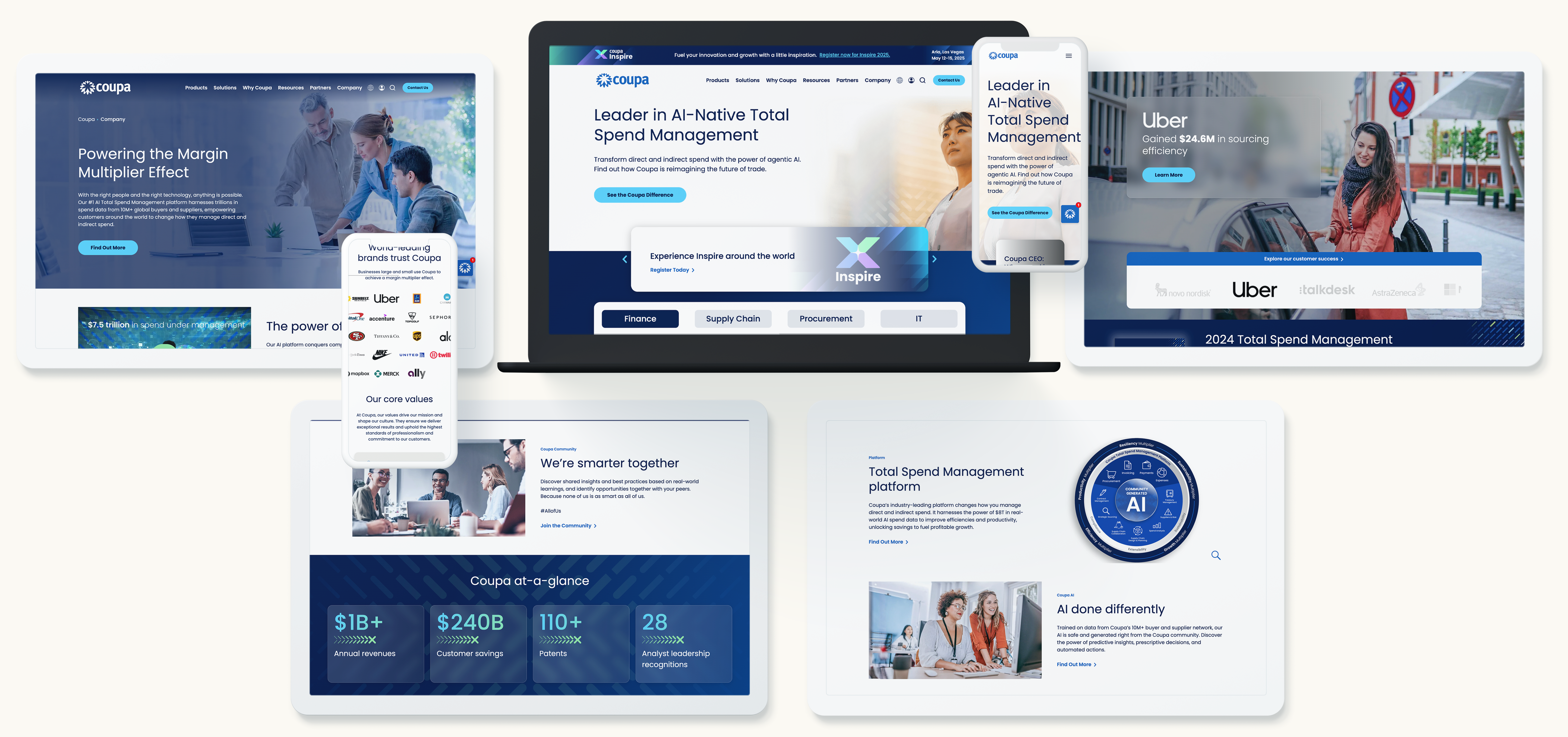
How Generative Search Changes SEO Fundamentals
The introduction of generative search alters the core principles of SEO in several ways:
- Shift from Keywords to Intent: Instead of optimizing purely for keywords, marketers must focus on answering questions thoroughly and accurately. SGE prioritizes content that provides clear, relevant, and contextually accurate information.
- Impact on Click-Through Rates: AI-generated summaries may reduce clicks to traditional web pages since users get answers directly in the search interface. This makes it critical to appear as a credible source within the summary itself.
- Authority and Trust Matter More: Generative search emphasizes authoritative content. Google favors content from sources with expertise, reliability, and trustworthiness, making brand reputation more important than ever.
- Structured Data is Essential: AI models rely on structured content to interpret context effectively. Proper use of schema markup can increase the likelihood your content is cited in AI-generated responses.
This evolution doesn’t make traditional SEO irrelevant—it changes the rules, requiring a deeper focus on content quality, authority, and AI-readability.
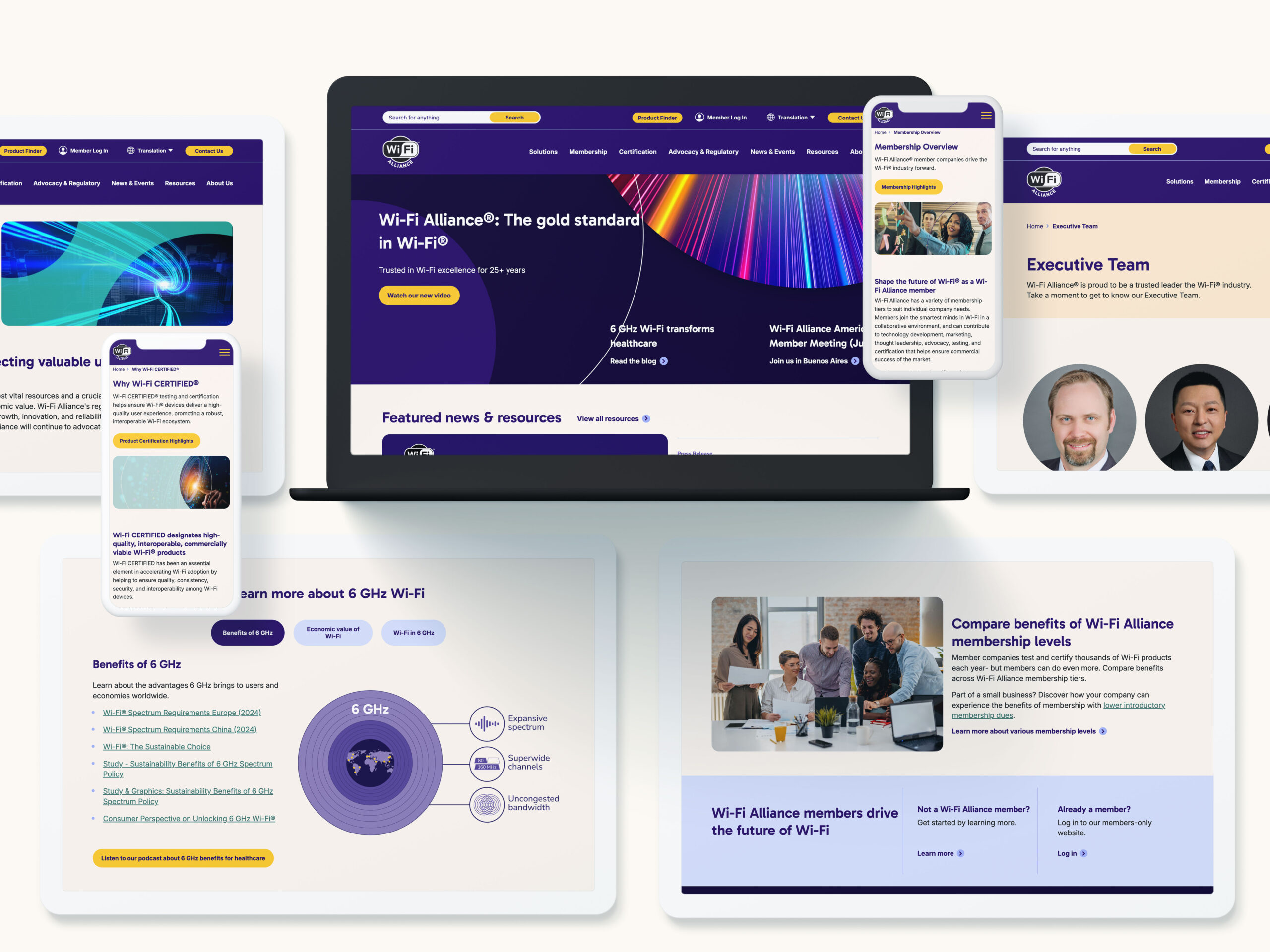
Adapting Your SEO Strategy for the SGE Era
Staying competitive in a generative search landscape requires updating your SEO strategy. Here are key approaches:
1. Prioritize Content Depth and Expertise
Short, surface-level content is less likely to be selected for AI-generated answers. Create comprehensive resources that thoroughly address topics, answer potential follow-up questions, and demonstrate expertise.
2. Optimize for Featured Snippets and Summaries
SGE relies heavily on structured summaries. Format content with clear headings, bullet points, tables, and concise paragraphs to make it easily digestible for AI models.
3. Invest in Structured Data and Schema
Use schema markup to signal to Google what your content is about, who authored it, and the type of information it contains. Properly structured content is more likely to be surfaced in generative summaries.
4. Focus on User Intent and Search Context
Understand the questions your audience is asking, not just the keywords they’re typing. Research intent, related queries, and problem-solving content to align with AI’s focus on context over keywords.
5. Monitor AI-Driven SERP Changes
Track how traffic and engagement shift as generative search expands. Regularly review which queries your content appears in, adjust messaging as needed, and update underperforming pages to maintain visibility.

Challenges and Considerations
Adapting SEO for generative search comes with challenges:
- Attribution Difficulty: When users get answers directly from AI, measuring traffic impact becomes trickier. Brands must rethink metrics beyond traditional clicks.
- Balancing AI Optimization with Readability: Content optimized for AI models must remain engaging and accessible to human readers. Over-optimization can harm user experience and trust.
- Keeping Up with Algorithm Changes: Google’s AI models are constantly evolving. Marketers need flexible strategies and regular monitoring to maintain performance.
- Ensuring Accuracy and Authority: AI-generated summaries depend on trustworthy sources. Brands must prioritize accuracy, citations, and expertise to avoid being misrepresented.
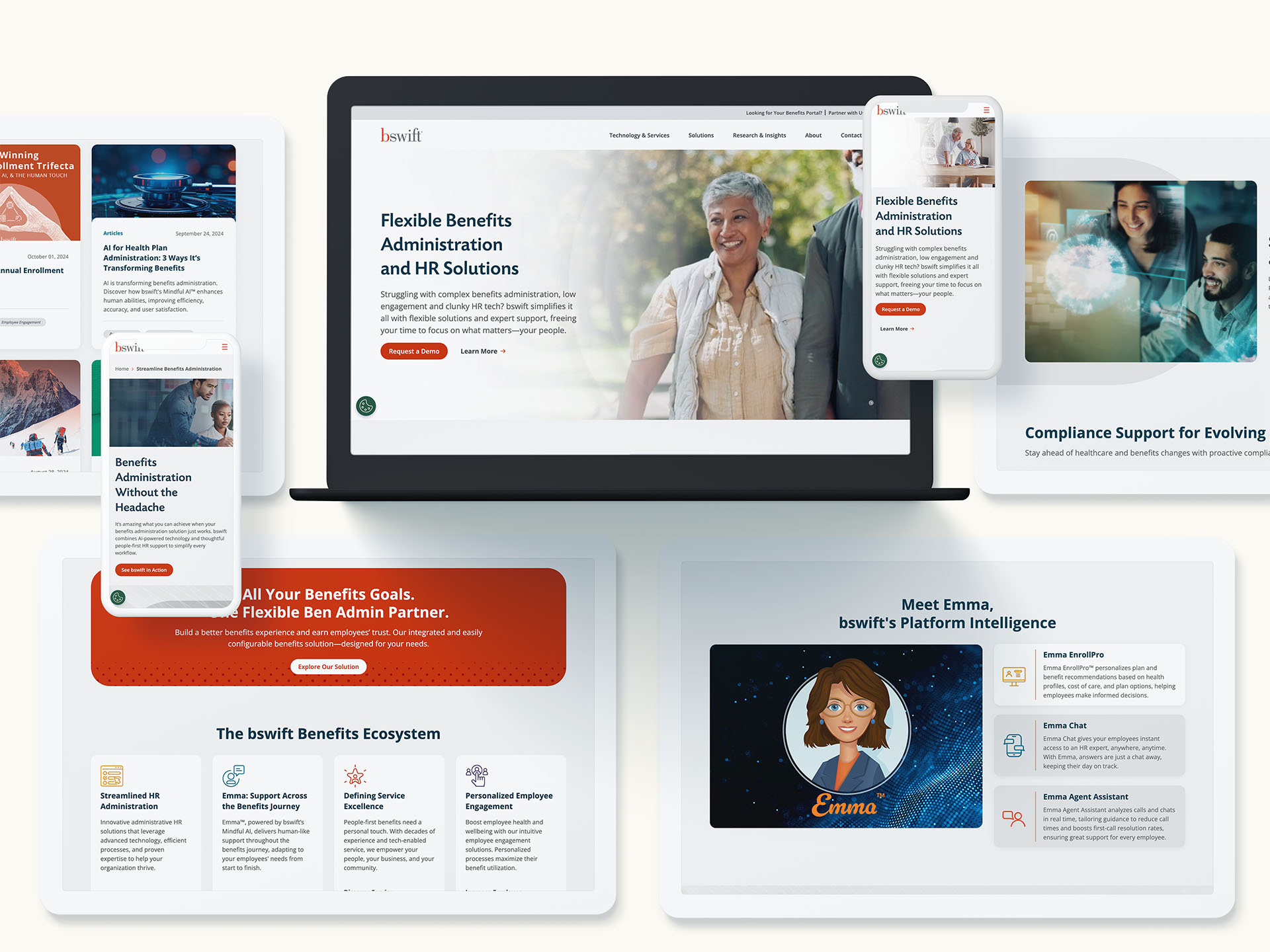
Actionable Takeaways
Generative search represents a fundamental shift in how information is discovered and consumed online. Marketers who adapt early by prioritizing authority, context, and structured content will gain an advantage.
Key takeaways:
- Focus on content depth and expertise.
- Optimize for summaries and structured data.
- Align content with user intent rather than just keywords.
- Monitor AI-driven SERPs and iterate strategies regularly.
The future of SEO is AI-driven, but combining traditional optimization with generative search strategies ensures your brand remains visible, credible, and authoritative.
The way people search for information is changing — and fast. For years, businesses have centered their digital strategies around search engines like Google and Bing. Ranking well in search meant visibility, traffic, and leads. But the rise of answer engines — tools like ChatGPT, Gemini, Claude, and Perplexity — is rewriting the rules.
Unlike search engines, which serve up links, answer engines provide direct, conversational responses. They don’t just guide users to content — they become the content. For businesses, this shift creates both a challenge and an opportunity: traditional SEO isn’t enough anymore. To remain visible, trusted, and competitive, brands must optimize for both search engines and answer engines as distinct marketing channels.
What Are Search Engines and Answer Engines?
Search Engines Defined
Search engines like Google, Bing, and Yahoo have long been the backbone of digital discovery. Their core function is straightforward: crawl, index, and rank websites based on relevance and authority. When users enter a query, search engines return a list of links to external sources.
This model fuels visibility, click-throughs, and traffic. Businesses optimize with SEO strategies like keyword targeting, backlink building, and content depth to appear higher in search engine results pages (SERPs).
Answer Engines Defined
Answer engines, by contrast, work differently. Tools like ChatGPT, Gemini, Claude, and Perplexity are powered by large language models (LLMs) trained to generate and synthesize information. Instead of returning a list of links, they deliver a direct, conversational answer.
When a user asks, “What’s the best CRM for mid-sized businesses?”, Google might provide a page of review sites and vendor pages. ChatGPT, on the other hand, will deliver a summarized recommendation, drawing from multiple sources — often without requiring the user to click elsewhere.
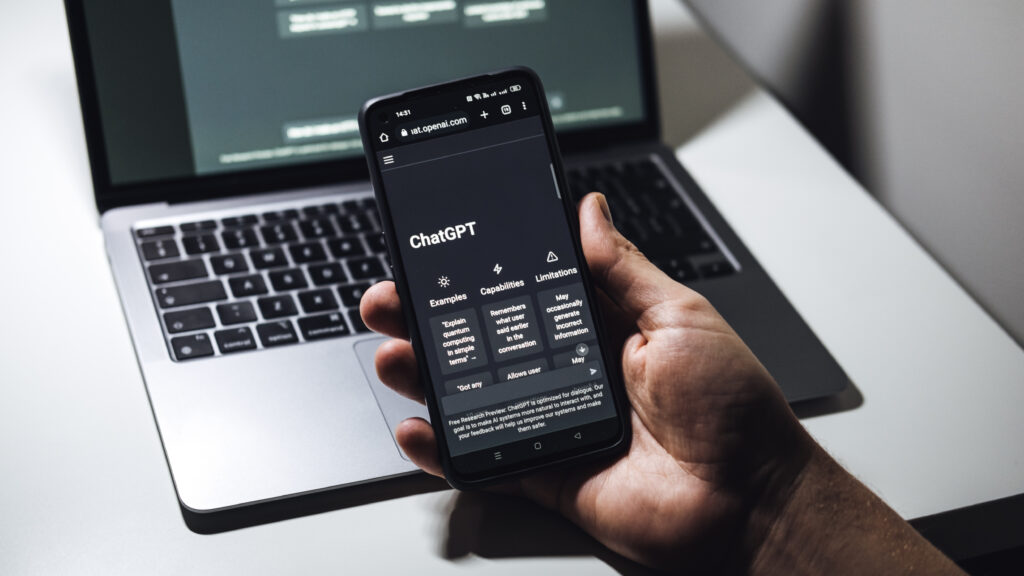
How Consumers Use Them Differently
Search Engines = Discovery and Comparison
Search remains the go-to tool for discovery. Consumers use it to compare options, read reviews, and explore multiple websites before making a decision. For example:
- Query: “Best CRM software 2025”
- User behavior: Scan a top 10 list, visit vendor sites, and weigh features.
Search thrives when users want breadth, depth, and choice.
Answer Engines = Direct and Conversational
Answer engines are where users go when they want clarity and speed. Instead of digging through multiple pages, they can ask a question and receive a concise, authoritative response.
- Query: “What’s the best CRM for mid-sized businesses?”
- User behavior: Accepts a synthesized answer and may only follow up on one or two suggested options.
Implications for User Trust & Behavior
- In search, users verify information across multiple sources.
- In answer engines, users often trust the first, most authoritative-sounding response.
This shift in user behavior underscores why businesses can’t afford to ignore answer engines. If your brand isn’t represented in AI-generated answers, you risk invisibility in a channel that’s rapidly becoming mainstream.
What This Means for Marketers
Limitations of SEO-Only Strategies
SEO remains critical, but a #1 Google ranking doesn’t guarantee visibility in ChatGPT or Gemini. Answer engines don’t simply mirror SERPs — they blend multiple data sources, including structured content, FAQs, authoritative sites, and brand mentions across the web.
The Rise of Answer Engine Optimization (AEO)
This is where Answer Engine Optimization (AEO) comes in. Unlike SEO, which focuses on signals like backlinks and keywords, AEO is about making content clear, direct, authoritative, and structured so it can be easily understood and cited by AI models.
Businesses that fail to adapt may find themselves out of the conversation — literally.
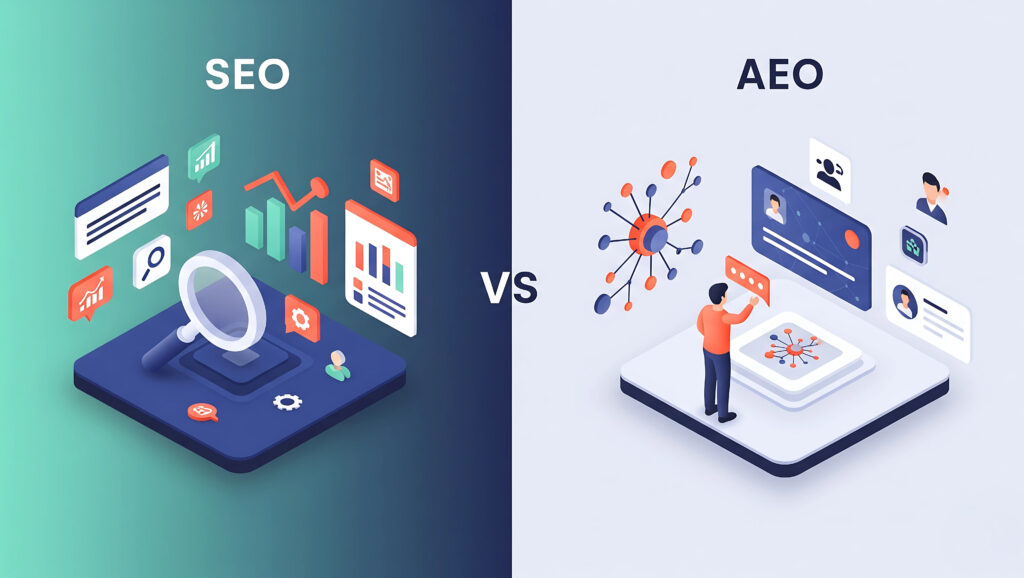
Strategies to Optimize Across Channels
Optimizing for Search Engines (SEO)
Search engine optimization remains foundational. Key tactics include:
- Technical SEO: Ensure sites are fast, mobile-friendly, and indexable.
- Keyword Strategy: Target relevant, high-intent keywords that match user queries.
- Content Depth: Publish long-form, authoritative content that demonstrates expertise.
- Link Building: Strengthen domain authority through trusted backlinks.
These tactics ensure continued visibility in Google and Bing, where billions of searches still happen daily.
Optimizing for Answer Engines (AEO)
Answer engines require a different approach. To increase the likelihood your brand appears in AI-generated answers:
- FAQ-Driven Content: Write content in Q&A form that matches how users phrase questions.
- Structured Data & Schema Markup: Use metadata to help AI models understand and categorize your content.
- Thought Leadership: Publish authoritative insights and contribute to reputable publications.
- Conversational Style: Write in natural, direct language — the way people actually ask questions.
These tactics help answer engines recognize your content as reliable and relevant, increasing your chances of being surfaced.
Why Businesses Need Both
Treating SEO and AEO as complementary channels is critical.
- Search drives discovery traffic and brand awareness.
- Answer engines shape perception and recommendations.
Together, they form a holistic digital marketing ecosystem where businesses can both attract new prospects and influence their decision-making at critical moments.
The Future of Digital Marketing Channels
Search and answer engines are not mutually exclusive — they will coexist and converge. Search engines are already incorporating AI-powered overviews, and answer engines increasingly cite traditional search results.
Looking ahead:
- AI will favor authoritative brands. Companies with consistent, credible digital footprints will surface more often in answers.
- Omnichannel strategies will win. Businesses must ensure consistency across their websites, content, and external mentions.
- First movers will gain advantage. Companies that optimize early for both SEO and AEO will establish authority before competitors catch up.
For marketers, the message is clear: don’t wait for the future to arrive — build for it now.
Bluetext’s Perspective
At Bluetext, we help brands navigate this shift. Our approach combines the proven fundamentals of SEO with forward-looking AEO strategies, ensuring businesses stay visible across all digital channels. From technical optimization to thought leadership campaigns, we position clients to succeed in both search engines and answer engines — today and tomorrow.
Time to Rethink Your Digital Strategy
The evolution from search to answers is reshaping how people find, trust, and engage with brands. Businesses that adapt their strategies now will lead the conversation in the years ahead.
Is your marketing strategy built for both search engines and answer engines? Contact Bluetext to learn how we can help your brand optimize across channels and stay ahead of the curve.
Government contracting is a high-stakes, highly competitive market. With more government buyers turning to AI-powered generative search tools to quickly find trusted vendors and solutions, Answer Engine Optimization (AEO) has become a critical strategy for GovCon firms. AEO ensures your capabilities, certifications, and past performance are prominently featured in AI-generated procurement insights.
Why AEO is a Game Changer for GovCon Firms
Generative AI engines prioritize content that is structured, authoritative, and aligned with the specific needs of government procurement officers. Optimizing for AEO means your firm can:
- Increase visibility in AI-powered contract searches.
- Clearly communicate your compliance and certifications.
- Provide quick, AI-friendly access to past performance and capabilities.
AEO Strategies Tailored for GovCon
1. Publish Detailed Capability Statements
Create well-organized pages that succinctly describe your services, certifications, and unique differentiators, formatted for easy AI extraction.
2. Develop FAQ Sections Targeted at Procurement Queries
Anticipate government buyers’ common questions and provide concise, authoritative answers on contract processes, compliance, and requirements.
3. Use Schema Markup to Highlight Contract Awards and Partners
Structured data can showcase your contract wins, strategic partnerships, and affiliations, signaling credibility to AI engines.
4. Share Data-Driven Past Performance Case Studies
Provide detailed, metrics-focused examples of successful government projects to help AI systems assess your qualifications.
5. Maintain Up-to-Date Compliance Information
Regularly update content on certifications, registrations (like SAM.gov), and regulatory compliance to stay relevant in AI-generated results.
Benefits of AEO for GovCon Firms
- Improves discoverability by procurement officers using AI chatbots.
- Shortens the procurement research cycle with AI-summarized insights.
- Positions your firm as a trusted, capable partner in government contracting.
Challenges and Tips for Effective AEO in GovCon
- Avoid overly technical language that confuses AI.
- Keep content factual and regularly updated.
- Ensure your website architecture supports easy navigation and AI indexing.
Answer Engine Optimization is transforming how GovCon firms connect with government buyers in an AI-driven marketplace. By investing in AEO today, you can gain a critical advantage in winning contracts and building lasting government relationships.
Bluetext specializes in helping GovCon firms master AEO strategies tailored for the unique demands of government procurement. Contact us to get started on your AEO journey.
Cybersecurity is a field where accuracy, trust, and timely information are paramount. As government agencies, enterprises, and individuals increasingly rely on AI-powered generative engines to seek security advice and solutions, cybersecurity companies must adapt by optimizing their digital content for these AI platforms. This process, known as Answer Engine Optimization (AEO), helps ensure your brand is seen as authoritative and reliable in AI-driven search results.
What Makes AEO Essential for Cybersecurity Firms?
Generative AI models rank content based on context, relevance, and trustworthiness. For cybersecurity companies, this means producing clear, accurate, and detailed content that addresses complex security topics without overwhelming AI engines or users. AEO enables your firm to:
- Educate potential clients effectively.
- Build brand authority in a crowded market.
- Increase visibility in AI-powered searches related to cyber threats, compliance, and best practices.
Key AEO Best Practices for Cybersecurity
1. Publish Actionable Threat Analyses
Regularly update your website with clear, concise analyses of current cybersecurity threats, trends, and mitigation strategies. AI engines prioritize up-to-date, fact-based content.
2. Develop Glossaries and FAQs for Industry Jargon
Help AI models understand complex cybersecurity terms by creating well-organized glossaries and FAQs that explain acronyms, technologies, and regulations.
3. Use Structured Data to Highlight Certifications
Implement schema markup to showcase your company’s certifications, compliance standards, and awards, increasing trust signals to AI engines and users.
4. Share Data-Driven Case Studies
Demonstrate your expertise and results with detailed case studies that provide specific metrics and outcomes, helping AI systems validate your authority.
5. Write for Clarity and Precision
Avoid overly technical language where possible and focus on delivering clear, precise explanations to assist AI comprehension and user understanding.
The Role of AEO in Cybersecurity Marketing
Adopting AEO tactics can transform your cybersecurity marketing by:
- Improving your content’s chance of being cited by AI in answer boxes and chatbots.
- Enhancing educational outreach to prospects and stakeholders.
- Strengthening trust and credibility through authoritative content signaling.
Avoiding Common AEO Mistakes
- Don’t overstuff keywords or jargon, which can confuse AI engines.
- Avoid publishing outdated security info that undermines your credibility.
- Ensure your site loads quickly and is mobile-friendly for better AI indexing.
The cybersecurity landscape demands precision and trust—two qualities that AEO optimization amplifies for AI-driven search. Bluetext is ready to help cybersecurity firms build content strategies that excel in the generative AI era. Reach out to us to start securing your AI search presence.
In today’s digital-first world, B2B SaaS companies face increasing competition for attention. As buyers shift to using AI-powered tools like ChatGPT and Microsoft Copilot for research and decision-making, traditional SEO is no longer enough. Answer Engine Optimization (AEO) is emerging as the new frontier to ensure your SaaS products are visible, relevant, and compelling within AI-driven search environments.
What is Answer Engine Optimization (AEO)?
AEO involves optimizing your digital content so that AI generative engines can easily interpret, extract, and surface your information in conversational search results. Unlike traditional SEO that targets keyword rankings on search engine results pages (SERPs), AEO focuses on clarity, context, and structured data that AI models use to generate natural language responses.
Why AEO is Critical for B2B SaaS Companies
The B2B SaaS buyer’s journey is complex, often involving multiple stakeholders and stages of research. Generative AI engines simplify this process by providing quick, accurate answers through conversational interfaces. If your SaaS content is not optimized for AEO, you risk missing out on high-intent traffic channeled through AI-powered searches.
Key AEO Strategies for SaaS Companies
1. Create Conversational Product Descriptions
Write product pages that mimic how customers naturally ask questions about your SaaS offerings. Use language that addresses pain points, benefits, and solutions clearly.
2. Build and Optimize Knowledge Bases
Develop comprehensive FAQs and support documentation structured with clear headings and concise answers. This helps AI engines pull precise snippets for user queries.
3. Leverage Schema Markup for SaaS Features
Implement structured data for product details, pricing, reviews, and integrations to enhance AI comprehension and eligibility for rich results.
4. Use Use Case Storytelling
Share specific scenarios where your SaaS solves customer challenges. AI engines favor content that provides context-rich examples rather than generic descriptions.
5. Focus on Semantic Keyword Integration
Beyond exact keywords, incorporate related terms and phrases that reflect how users converse with AI assistants. This improves your content’s contextual relevance.
How AEO Supports SaaS Marketing Goals
Optimizing for AEO benefits SaaS marketers by:
- Increasing AI-driven lead generation through higher visibility in conversational answers.
- Reducing friction in the buyer journey by providing instant, relevant information.
- Enhancing brand authority as a trusted, AI-recognized source of knowledge.
- Expanding reach in voice search and digital assistants commonly used by business professionals.
Common Challenges and How to Overcome Them
Many SaaS companies struggle with AEO because their content is overly technical or keyword-stuffed, which AI engines can misinterpret or penalize. To succeed:
- Simplify language without losing industry accuracy.
- Avoid jargon-heavy text by including clear definitions.
- Regularly audit and update your content to keep pace with product changes and AI algorithm updates.
Answer Engine Optimization is essential for B2B SaaS firms aiming to thrive in the age of AI search. By integrating AEO strategies into your marketing efforts, you ensure your solutions are discoverable, credible, and persuasive to the modern buyer.
If you want to future-proof your SaaS marketing with advanced AEO tactics, contact Bluetext today for expert guidance and support.
It’s easy to think of brand reputation as something soft—sentiment, social buzz, or how people feel about your name. But in today’s marketing environment, reputation isn’t just perception. It’s infrastructure.
With the rise of AI-driven tools and generative search engines, your brand’s reputation isn’t just being observed—it’s being modeled. The language used to describe you, the consistency of your message, and the credibility of the sites linking back to you are all shaping how search engines and AI systems categorize and recall your business.
This isn’t about visibility in the traditional sense. It’s about structural presence—your reputation layer—the ambient signals that define your brand online, whether you control them or not.
From Awareness to Infrastructure
For years, digital marketers chased brand awareness. We built impressions, optimized for reach, and reported on vanity metrics. But the game has changed.
Today, AI models and search engines don’t just index content—they synthesize it. When someone asks a tool like ChatGPT or Google’s Search Generative Experience about your company, the system responds based on everything it has seen, learned, and inferred.
At that moment, your brand isn’t represented by your latest campaign or homepage headline. It’s represented by the composite reputation you’ve built across the web. That includes:
- How often your brand is mentioned
- What words are used to describe you
- Who links to your site
- Whether those links appear in trustworthy contexts
- And how consistently all of the above aligns
In short: your brand’s reputation is shaped by the web’s memory—and your job is to help shape what that memory retains.
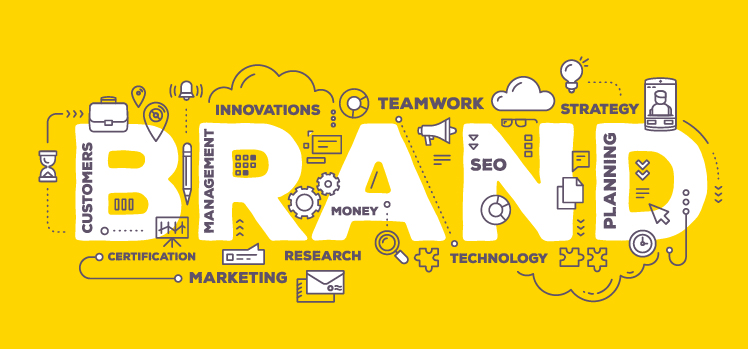
The Reputation War Is a War of Memory
Let’s break it down. A better competitor doesn’t need a bigger ad budget to win. They just need to appear:
- More consistently described
- Across more trustworthy sources
- With fewer contradictions and more clarity
This creates what we call the reputation layer—a foundation of consistent, contextual, and credible digital signals that strengthens how your brand is understood by algorithms and humans alike.
Think of it like digital compounding interest. Each consistent mention, backlink, and structured data point strengthens your standing not just in Google rankings, but in the semantic networks that AI systems build behind the scenes.
Generative Engine Optimization: The Next Frontier
Traditional SEO is still important, but it’s no longer enough.
Enter Generative Engine Optimization (GEO)—a newer discipline focused on influencing how generative AI tools perceive and recall your brand.
Where SEO focuses on rankings, GEO focuses on representation. That means building the kind of consistent, contextual footprint that models use to answer questions, complete prompts, and offer recommendations.
GEO tactics include:
- Using consistent brand language across all digital channels
- Securing high-authority mentions and backlinks
- Creating well-structured, easily digestible content
- Optimizing metadata, schema, and semantic associations
- Encouraging trusted third-party coverage and citations
In GEO, the goal is not just to be seen—it’s to be understood accurately and repeated confidently by systems that influence buying behavior.
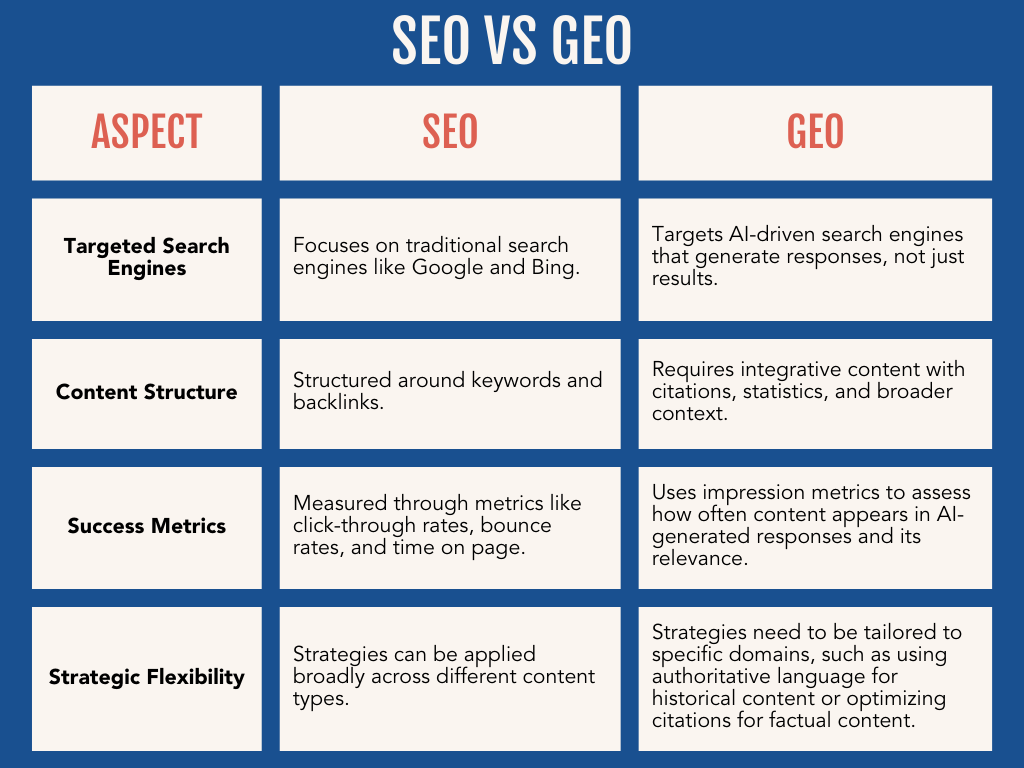
Consistency Is No Longer Optional
If your homepage says one thing, your press release says another, and your LinkedIn profile tells a third story, you’re not just confusing customers—you’re confusing the system.
And systems don’t forget.
Every inconsistency across your digital presence introduces ambiguity. That ambiguity weakens your authority, makes your content harder to categorize, and reduces the likelihood of your brand being surfaced in search or summarized in generative answers.
Consistency, on the other hand, creates semantic strength. It gives both humans and machines a clear, repeatable understanding of what your brand stands for, what you do, and why you matter.
Where Reputation Lives: Building Your Brand’s Memory Layer
To strengthen your brand’s reputation layer, focus on these four pillars:
1. Consistency Across Channels
Ensure your messaging, brand descriptors, and visual identity are aligned across every digital touchpoint—from your website to your social media bios to your executive bios on third-party sites.
2. Contextual Placement
It’s not just about where you’re mentioned. It’s about how you’re mentioned. Are you cited as a leader? Are you associated with innovation, security, growth? The language around your brand matters just as much as the link itself.
3. Credibility of Sources
Backlinks from high-authority websites (think trade publications, well-regarded industry blogs, or news outlets) send trust signals to both search engines and AI models. A citation in a reputable source can be more impactful than 100 low-quality mentions.
4. Structured Content
Make it easy for machines to parse your content. Use headers, schema markup, and plain language to reinforce key themes. Structure reinforces clarity—which reinforces trust.
Strategic Questions to Ask Right Now
If you want to gauge the strength of your brand’s reputation layer, start with these questions:
- Is our brand described consistently across all third-party platforms?
- Are we being cited or mentioned by credible sources?
- Do we control our entries in structured data repositories like Wikidata?
- Have we earned relevant backlinks from trusted websites?
- Does our messaging align across sales, marketing, PR, and executive thought leadership?

A Coherent Brand Is a Competitive Advantage
The brands winning today aren’t just investing in performance ads or clever copy. They’re investing in coherence.
They’re managing not just their content, but the context around their content. They’re shaping how others talk about them. And they’re being rewarded with better placement, more accurate representation, and stronger recall in both search engines and AI-generated responses.
If your brand is scattered, the system remembers that. But if your brand is disciplined, reliable, and strategically visible—the system rewards that too.
Reputation Is the New Brand Infrastructure
Inclusion is everything. But inclusion without control is chaos. That’s why reputation is no longer just a PR concern—it’s part of your core marketing infrastructure.
In an AI-first landscape, your brand’s reputation layer is one of the most powerful assets you have. Treat it like infrastructure. Maintain it. Reinforce it. Strengthen it over time.
Because the next time someone asks an AI about your business, it’s your reputation—your digital residue—that will answer.
Want to Strengthen Your Brand’s Reputation Layer?
Bluetext helps organizations build consistent, contextual brand infrastructure that performs across SEO, AI search, and beyond. Whether you need help aligning your message, earning the right mentions, or auditing your digital footprint—we’re here to help.
Contact us today to get started.
Answer Engine Optimization (AEO) is no longer just a buzzword—it’s a crucial strategy for companies looking to thrive in the age of AI-driven search. With conversational AI tools like ChatGPT, Microsoft Bing Chat, and other generative models transforming how users seek and receive information, optimizing for AEO means adapting your digital content to be AI-friendly, context-rich, and semantically meaningful.
Why Traditional SEO Isn’t Enough in the AI Era
Traditional SEO techniques focus largely on keyword rankings, backlinks, and technical site health to improve visibility on standard search engines. While these remain important, generative AI engines evaluate content differently. They emphasize:
- Contextual relevance over keyword density.
- Clear, authoritative answers over content volume.
- User intent understanding rather than just query matching.
This shift means marketers need to rethink how they create and structure content for better performance in AI-powered search results.
Advanced AEO Strategies for Marketers
1. Optimize Content for AI “Answer Engines”
AI engines generate responses based on data patterns and context. Provide clear, concise answers within your content, especially near the beginning of pages or sections. Think like a helpful AI assistant—what’s the best way to deliver your key message in one or two sentences?
2. Implement Rich Data Integration
Supplement your content with structured data, knowledge graphs, and linked data. This allows AI to connect the dots between concepts and entities, enhancing your content’s discoverability and trustworthiness.
3. Focus on User Intent with Conversational Content
Map out your audience’s common questions and conversational queries. Develop content that anticipates follow-up questions and provides layered information to satisfy deeper exploration.
4. Enhance Content with Multimedia and Interactive Elements
Generative engines often pull from diverse content types. Include images with descriptive alt text, videos with transcripts, and interactive tools that provide additional context or personalized information.
5. Maintain Content Freshness and Authority
AI models favor up-to-date information. Regularly update your content to reflect new data, trends, or insights. Also, build author authority by linking to credible sources and showcasing expert authorship.
6. Leverage AI Tools to Audit and Improve AEO Readiness
Use emerging AI tools to analyze your content’s effectiveness for generative engines. Tools can help you identify gaps in context, relevance, and structure, guiding optimization efforts.
Common Pitfalls to Avoid in AEO Optimization
- Overloading content with keywords—AI values natural language, not keyword stuffing.
- Neglecting schema markup—structured data is critical for AI comprehension.
- Ignoring user experience—slow load times and confusing layouts reduce content’s value.
- Publishing vague or generic content—AI favors specificity and clarity.
Measuring Success in AEO
Tracking AEO performance requires a new set of metrics:
- Visibility in AI-powered answer boxes and chat responses.
- Engagement with conversational AI interfaces.
- Direct traffic from voice and AI assistant queries.
- Improved brand mention and citation in AI-generated content.
Combine these with traditional SEO KPIs for a comprehensive view of your digital presence.
Getting Started with AEO: Practical Steps for Your Company
- Conduct a content audit focusing on clarity, structure, and relevance for AI.
- Add or improve schema markup across your site.
- Develop a knowledge base or FAQ section optimized for conversational queries.
- Train your content team on writing for AI comprehension.
- Experiment with AI tools to refine your AEO strategy continually.
The Future is AEO — Are You Ready?
Answer Engine Optimization is transforming how companies compete in search and content discovery. By mastering advanced AEO strategies, you can ensure your brand stands out in AI-driven conversations and captures new audiences where traditional SEO alone falls short.
At Bluetext, we help forward-thinking companies navigate this new frontier with tailored AEO strategies that integrate seamlessly with existing marketing efforts. Ready to elevate your AI search presence? Get in touch with Bluetext today.
As artificial intelligence (AI) continues to revolutionize the digital landscape, a new form of optimization has emerged—Answer Engine Optimization (AEO). Unlike traditional Search Engine Optimization (SEO), which focuses on improving website rankings on keyword-based search engines like Google, AEO targets optimization for AI-powered generative engines such as ChatGPT, Bing Chat, and other conversational AI systems.
Generative engines generate responses, summaries, and content dynamically, relying heavily on the context and quality of the underlying data. AEO is about tailoring your digital assets—websites, content, and metadata—to be more accessible, relevant, and valuable for these AI models. This new form of optimization is critical as more users turn to AI assistants for answers rather than traditional search results.
How AEO Differs from Traditional SEO
Traditional SEO:
- Focuses on keywords, backlinks, site structure, and user experience to improve rankings on search engines.
- Relies on crawlers and indexing mechanisms to understand and rank static content.
- Users typically scan a page or click through links to find answers.
Answer Engine Optimization (AEO):
- Focuses on the context, clarity, and structured data that AI models use to generate natural language responses.
- Requires content designed for AI comprehension, including well-structured, authoritative, and factual information.
- Encourages semantic richness and integration of data sources that feed generative models.
- Often involves optimizing for “featured snippet” style answers and conversational formats.
Why AEO Matters for Companies
With generative AI becoming a primary way people seek information, companies that fail to optimize for AEO risk losing visibility in these new AI-powered interfaces. AEO can help brands:
- Gain visibility in AI chat results and voice assistants.
- Improve content discoverability in conversational search contexts.
- Build brand authority in emerging AI ecosystems.
- Capture new leads and customers by providing precise, AI-friendly answers.
Top Tips to Optimize Your Company for AEO
1. Create Clear, Structured, and Concise Content
Generative engines prefer content that is easy to parse and understand. Use headings, bullet points, and numbered lists to break down complex topics clearly.
2. Incorporate Semantic Keywords and Natural Language
Instead of focusing solely on exact-match keywords, integrate related terms and natural conversational phrases to align with how people ask questions verbally.
3. Leverage FAQs and Q&A Sections
Frequently asked questions and their answers help AI models quickly extract relevant information, increasing chances of being cited in generative responses.
4. Use Schema Markup and Structured Data
Enhance your content with schema.org markup to provide explicit metadata about your business, products, services, and articles, improving AI comprehension.
5. Publish Authoritative and Trustworthy Content
AI engines prioritize high-quality, fact-checked, and trustworthy content. Make sure your content is well-researched, cites credible sources, and is regularly updated.
6. Optimize for Voice Search and Conversational Queries
Many generative engines power voice assistants. Write content that answers questions naturally and succinctly to capture voice-based queries.
7. Monitor and Adapt to AI Algorithm Updates
Stay informed about changes in generative AI technology and adapt your content strategies accordingly. AEO is an evolving field, so flexibility is key.
AEO vs. SEO: Should You Shift Your Focus?
While AEO is gaining traction, it does not replace SEO—it complements it. Companies should continue strong SEO practices while gradually integrating AEO strategies to future-proof their digital presence. The synergy between traditional SEO and AEO will ensure you reach audiences across all search and AI platforms.
Embrace AEO to Stay Ahead in the AI Search Era
Answer Engine Optimization (AEO) represents the next frontier of digital marketing in a world increasingly influenced by AI-driven search and content generation. By understanding AEO and implementing these optimization tips, companies can enhance their visibility, credibility, and engagement with users in this rapidly evolving ecosystem.
If you’re ready to optimize your content for the future of AI search and generative engines, contact Bluetext today. We specialize in helping companies navigate new digital frontiers with smart, data-driven marketing strategies.
Artificial intelligence (AI) is revolutionizing search engine optimization (SEO), making it easier for businesses to improve rankings and visibility. From automated content optimization to predictive analytics, AI-powered tools help marketers refine their SEO strategies efficiently. In this guide, we’ll explore how AI is transforming SEO and which tools can give your brand a competitive edge.
How AI is Transforming SEO
AI enables more precise keyword targeting, smarter content recommendations, and real-time performance analysis. Businesses that embrace AI-driven SEO gain a competitive advantage in the digital landscape.
Key Benefits of AI-Driven SEO Tools:
- Enhanced keyword research: AI identifies emerging trends and high-value keywords.
- Automated content optimization: AI-powered suggestions improve readability and relevance.
- Smarter link-building strategies: AI detects valuable backlink opportunities.

Top AI Tools for SEO Optimization
1. AI-Powered Keyword Research
Tools like Clearscope and Semrush use AI to analyze search trends and recommend high-impact keywords.
2. Automated Content Optimization
Platforms like SurferSEO and MarketMuse help structure content for maximum SEO value.
3. AI-Based Technical SEO Audits
Tools such as Screaming Frog and Lumar identify and fix website issues automatically.
4. Predictive SEO Analytics
AI-driven analytics forecast search engine trends, allowing businesses to adapt proactively.
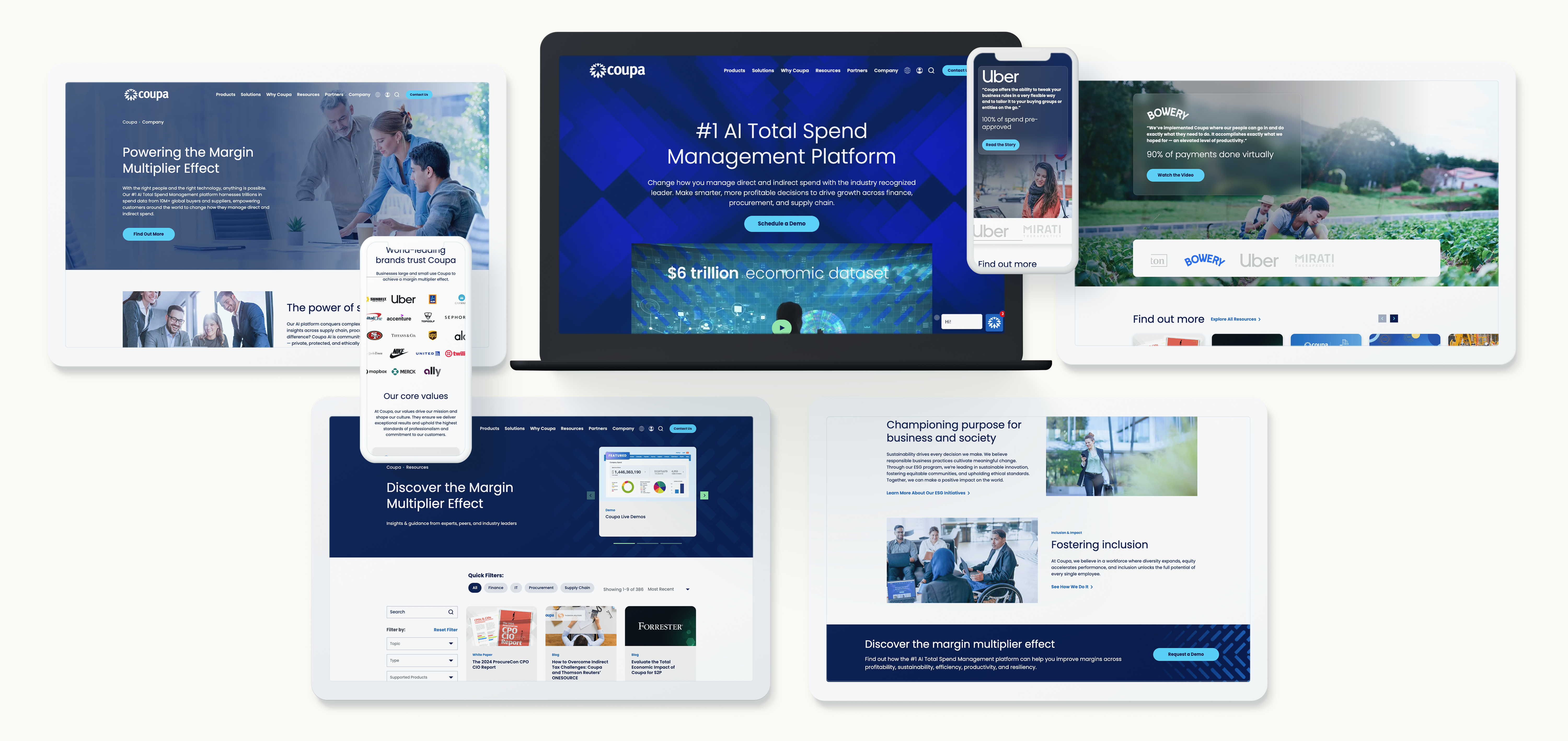
The Future of AI in SEO
Voice search optimization will become increasingly important as more consumers rely on smart assistants for search queries. AI-generated content will streamline content creation, enabling brands to scale their digital presence efficiently. Additionally, real-time SEO adjustments will allow businesses to respond dynamically to algorithm changes, ensuring sustained search visibility. By leveraging AI-powered tools, companies can stay ahead of the competition and maximize their online impact.
Want to leverage AI-driven tools for better SEO performance? Contact Bluetext today to optimize your strategy for success.
Take this blog post on the go! Listen to our podcast version for a convenient way to stay up-to-date on marketing trends and strategies.
Search engine optimization (SEO) has come a long way from its early days of keyword stuffing and link farming. As search engines have become more sophisticated, so too have the strategies needed to achieve high rankings. The evolution from keyword-centric SEO to a more nuanced approach that prioritizes semantic search and intent matching reflects the growing importance of understanding not just what users are searching for, but why they are searching for it.
At Bluetext, we recognize that staying ahead of these changes is crucial for brands that want to maintain a competitive edge. In this blog, we’ll explore the shift from traditional keyword-based SEO to the more advanced techniques of semantic search optimization. We’ll also provide actionable strategies for creating content that aligns with user intent, earns featured snippets, and ranks well in voice search results.
The Shift to Semantic Search
In the past, SEO was largely about identifying the right keywords and using them in the right places on a webpage. While keywords are still important, search engines like Google have advanced to the point where they can understand the context and meaning behind those keywords. This is known as semantic search.
Semantic search focuses on understanding the intent behind a user’s query and delivering results that are contextually relevant. For example, a user searching for “best running shoes” might be interested in different things depending on whether they’re a casual jogger or a marathon runner. Search engines now aim to understand these nuances and provide results that are more aligned with the user’s intent.
Understanding User Intent
User intent is the underlying goal a user has when they type a query into a search engine. There are generally four types of user intent:
- Informational Intent: The user is looking for information on a particular topic. Example: “How to train for a marathon.”
- Navigational Intent: The user wants to find a specific website or page. Example: “Nike running shoes.”
- Commercial Intent: The user is doing research on a particular product. Example: “Nike running shoe review.”
- Transactional Intent: The user is ready to make a purchase or take a specific action. Example: “Buy best running shoes for marathon.”
Understanding user intent is key to creating content that not only ranks well but also meets the needs of your audience. Instead of simply targeting keywords, focus on the intent behind those keywords and create content that satisfies that intent.
Strategies for Semantic SEO
To optimize for semantic search, consider the following strategies:
- Create Content Clusters: Organize your content around key topics or themes rather than individual keywords. For example, if your main topic is “running shoes,” create clusters of content that cover related subtopics like “types of running shoes,” “how to choose the right running shoes,” and “running shoe reviews.” This approach helps search engines understand the context of your content and boosts your chances of ranking for a wider range of related queries.
- Use Natural Language: Write your content in a way that mimics how people naturally speak and search. This is especially important for voice search optimization, where queries are often longer and more conversational.
- Answer Questions Directly: Featured snippets are often triggered by questions, so focus on providing clear, concise answers to common queries in your content. Use headings, bullet points, and tables to make your answers easy to find and understand.
- Optimize for Voice Search: With the rise of smart speakers and virtual assistants, voice search is becoming increasingly important. To optimize for voice search, focus on long-tail keywords and natural language queries. Also, consider the types of questions people might ask out loud and provide direct answers in your content.
Earning Featured Snippets
Featured snippets are the short answers that appear at the top of Google’s search results, often in response to a question. Earning a featured snippet can significantly boost your visibility and click-through rates. Here’s how to increase your chances:
- Identify Snippet Opportunities: Use tools like Ahrefs or SEMrush to find keywords that trigger featured snippets and are relevant to your content.
- Format Your Content for Snippets: Structure your content in a way that makes it easy for Google to extract a snippet. Use headings, lists, and tables to organize information clearly and concisely.
- Provide Comprehensive Answers: Featured snippets often pull from content that provides a thorough answer to a query. Make sure your content is detailed and covers all aspects of the topic.
The evolution of SEO from keywords to semantic search and intent matching represents a significant shift in how brands need to approach their digital marketing strategies. By focusing on user intent and creating content that aligns with that intent, brands can not only improve their search rankings but also deliver a better experience for their audience.
At Bluetext, we’re committed to helping brands navigate this ever-changing landscape. Whether you’re looking to optimize for semantic search, earn featured snippets, or rank well in voice search results, we have the expertise to help you succeed. Let’s work together to take your SEO strategy to the next level.